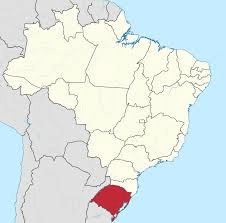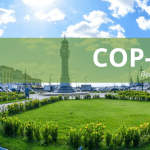Rio Grande do Sul: What Will We Learn from This Historic Tragedy?

Dr. Edivando Vitor do Couto/ eyesonbrasil
Amsterdam, 24 May 2024–Writing another piece about the historic tragedy in Rio Grande do Sul is challenging due to its complexity and the profound impact it has had on all of us. This tragedy affected all layers of society, from the richest to the poorest, regardless of color, sexual orientation, or gender identity.

However, as is common in disasters, the poorest were the most affected because their homes are their only refuge and they often lack the financial resources to face such calamities. Many lost everything they had.
Lessons Learned
First lesson: Climate change is an undeniable reality. We can no longer treat it as isolated events but as an ongoing and growing climate crisis.
Second lesson: There is climate vulnerability and injustice that reflects social injustice. Social inequalities amplify the impacts of climate disasters, hitting the most vulnerable groups the hardest.
Third lesson: Both the state and private institutions were unprepared to deal with the disaster. The floods in Rio Grande do Sul are just one example; other disasters like landslides, extreme heat and cold waves, and intense rains continue to threaten lives and resources.
Fourth lesson: There was a significant planning failure. We cannot solely blame the state’s governor. The responsibility also falls on poorly structured housing programs, inadequate municipal master plans, and financiers who do not properly assess property locations before financing constructions.
Fifth lesson: The denial of science is a serious problem. In Brazil, as in many other countries, teachers and scientists are undervalued, poorly paid, and often disregarded, even when their research is crucial for developing effective policies.
Paths to Action
To avoid repeating this tragedy, we need to implement urgent and coordinated actions:
1. Invest in resilient infrastructure: Build and adapt infrastructures capable of withstanding extreme weather events. Real examples include flood barriers in the Netherlands that protect against flooding and green infrastructures in cities like New York that help mitigate the effects of storms.

2. Science-based public policies: Governments must adopt policies based on science and evidence. This includes strengthening education and training for the population to handle emergencies. Cities like Copenhagen and Paris have robust climate plans that can serve as examples.
3. Society’s participation: Including society in decision-making is essential. Workshops and environmental education programs can promote greater awareness and community involvement. In Medellín, Colombia, participatory urban planning initiatives have successfully improved community resilience.
4. Co-responsibility system: Implement a co-responsibility system involving the financial sector, including developers and builders, ensuring that everyone is committed to sustainability and climate safety. Cities like Curitiba provide examples of public-private collaboration for sustainable development projects.
5. Multidisciplinary environmental studies: Conduct studies involving various disciplines, such as geology, ecology, engineering, and social sciences. These studies should guide decisions on land use and urban development. Germany, for example, uses a multidisciplinary approach to water resource management.
6. Restore natural spaces: It is crucial to return nature to its overflow spaces, lowlands, wetlands, floodplains, slopes, and hilltops. Scientific research should guide these actions, with funding for master’s and doctoral theses. Examples like the renaturalization of the Seine River in Paris show the benefits of these initiatives.
7. Strengthen existing institutions: The National Center for Monitoring and Early Warning of Natural Disasters (Cemaden/MCTI) needs an increased budget and expanded technical staff. Partnerships with academic institutions in Rio Grande do Sul, a state with one of the highest numbers of PhDs in Brazil and respected universities, can strengthen disaster response.
8. Public-private partnerships: Partnerships between Cemaden and the private sector, such as financial and insurance markets, can be beneficial. In Japan, partnerships between the government and private companies have been crucial in disaster preparedness and response.

Conclusion
The tragedy in Rio Grande do Sul showed us the extent of our vulnerability and lack of preparedness. The impact was devastating on several fronts:
Economic and Financial Losses
The financial losses were immense. The financial system and insurers faced a significant increase in insurance claims, destabilizing the market and raising future coverage costs. Businesses were destroyed, leading to increased unemployment and a regional economic slowdown.
Impact on Vulnerable Populations
The most vulnerable were disproportionately affected. Those without resources to rebuild their lives became even more exposed to dire conditions. Families who lost loved ones face not only grief but also uncertainty and despair about the future.
Losses for Families
Many families lost everything, including homes and belongings accumulated over years. The pain of material loss is amplified by the emotional pain of losing loved ones. These losses are irreparable and have a lasting effect on the social and community fabric.
Impact on Agriculture

Farms, which are the backbone of the rural economy, suffered irreparable damage. Crops were destroyed, animals died, and the soil was ruined, which will have long-term consequences for food security and the local economy.
Psychological and Mental Health Impact
The psychological impact was profound. The mental health of survivors was severely affected, with an increase in cases of depression, anxiety, and post-traumatic stress disorder. This increased demand for mental health services adds additional pressure to both public and private systems.
Impact on the Health System
Health systems, already overburdened, faced an increase in demand for medical and psychological services. Hospitals and clinics had to deal with a large number of injured and traumatized people, often without the necessary resources to provide adequate care.
Lessons Learned

In light of all this, we can learn some important things. First, for complex problems like those caused by climate change, there are no easy solutions. Effective response requires a joint effort, involving governments, private institutions, civil society, and, crucially, the scientific community.
Paths to the Future
To mitigate the effects of future climate crises, it is essential to adopt concrete actions, based on science and broad collaboration from all sectors of society. The contribution of professionals from universities and research institutions in Rio Grande do Sul will be fundamental for creating effective solutions. This state, with one of the highest numbers of PhDs in Brazil and internationally renowned universities, has immense potential for knowledge and innovation.
Call to Action
We must better prepare for future disasters by investing in resilient infrastructure, science-based public policies, societal participation, co-responsibility systems, multidisciplinary environmental studies, restoration of natural spaces, strengthening existing institutions, and public-private partnerships. Only with coordinated actions and an interdisciplinary approach can we mitigate the effects of future climate crises and build a more resilient and just society.
The tragedy in Rio Grande do Sul is a clear warning that we are all connected and vulnerable to the impacts of climate change. Now, more than ever, it is crucial that we turn this learning into concrete actions to ensure a sustainable and safe future for all.
by Dr. Edivando Vitor do Couto/ for eyesonbrasil









